|
The Artists’ Barn
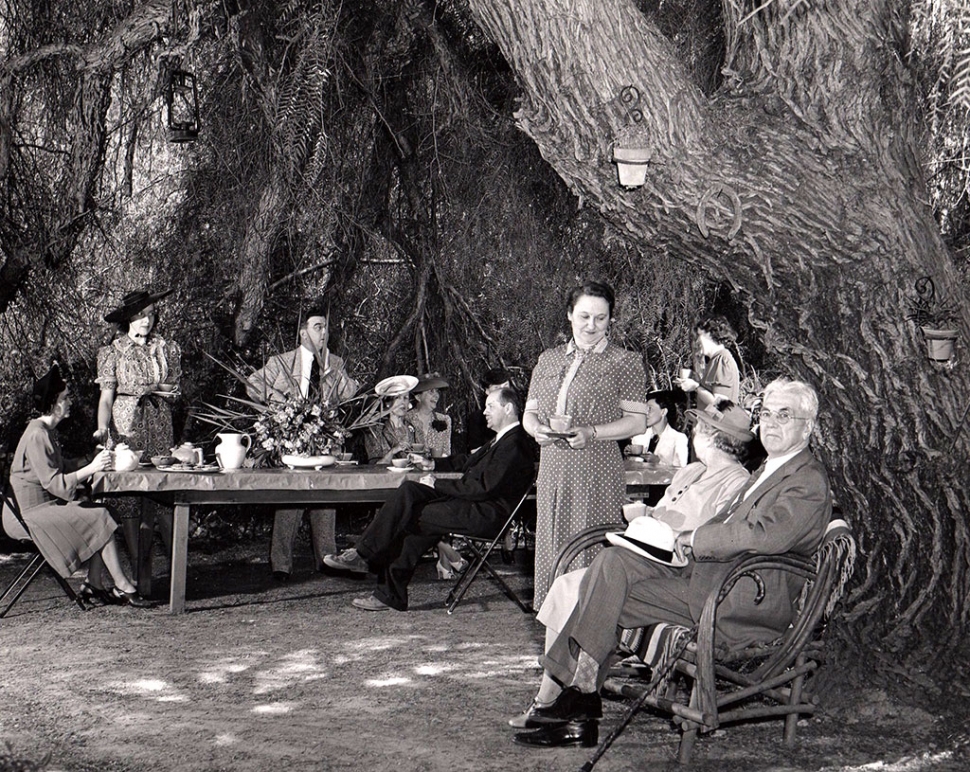 A group gathered for tea under the Pepper tree in 1940. Photos courtesy Fillmore Historical Museum. By Anonymous — Wednesday, February 17th, 2021
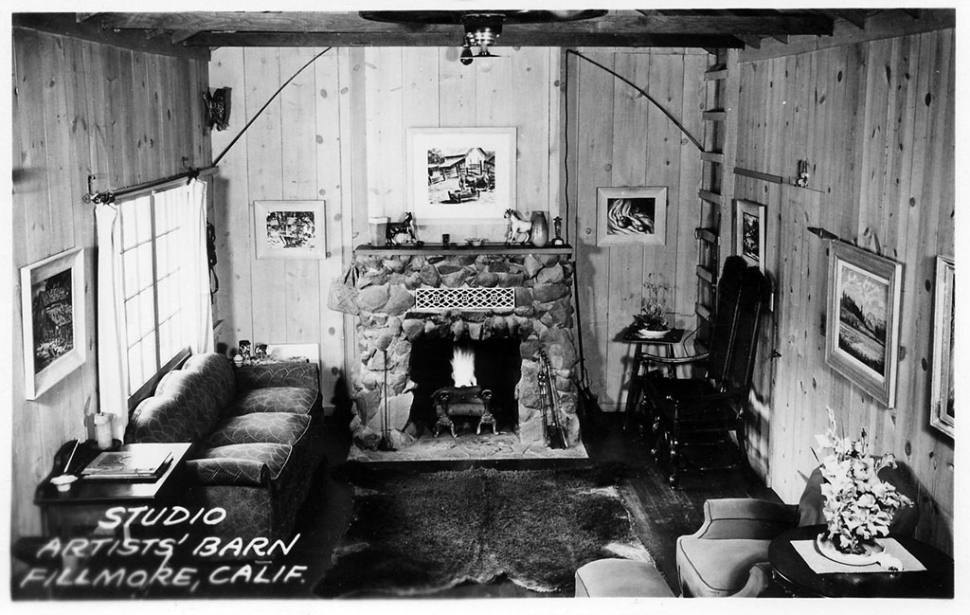 Above is the interior of the Artists’ Barn which opened in November 21, 1936. 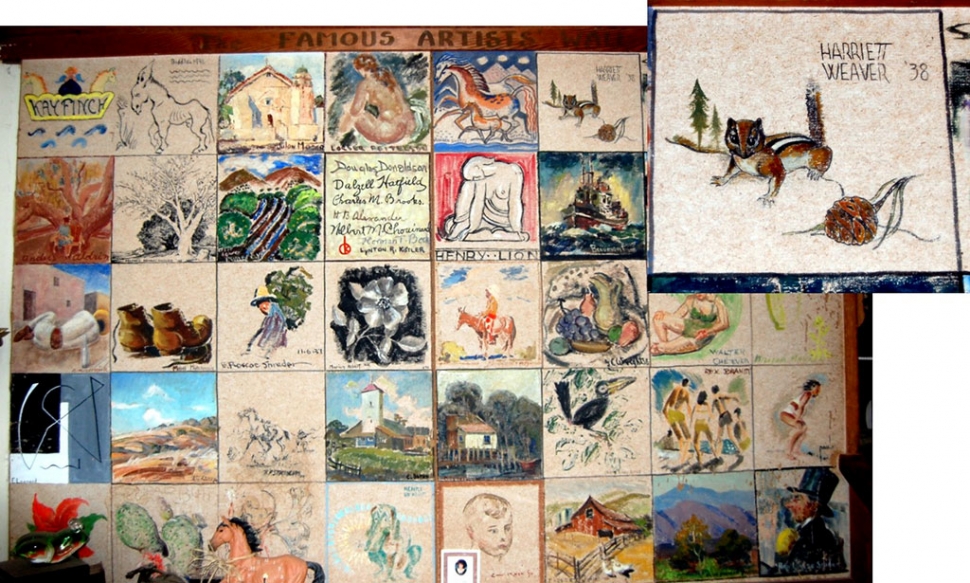 Pictured above is the Artists’ Wall today with a close up of local teacher, writer and artist, Harriet “Petey” Weaver’s square in the top right hand corner. 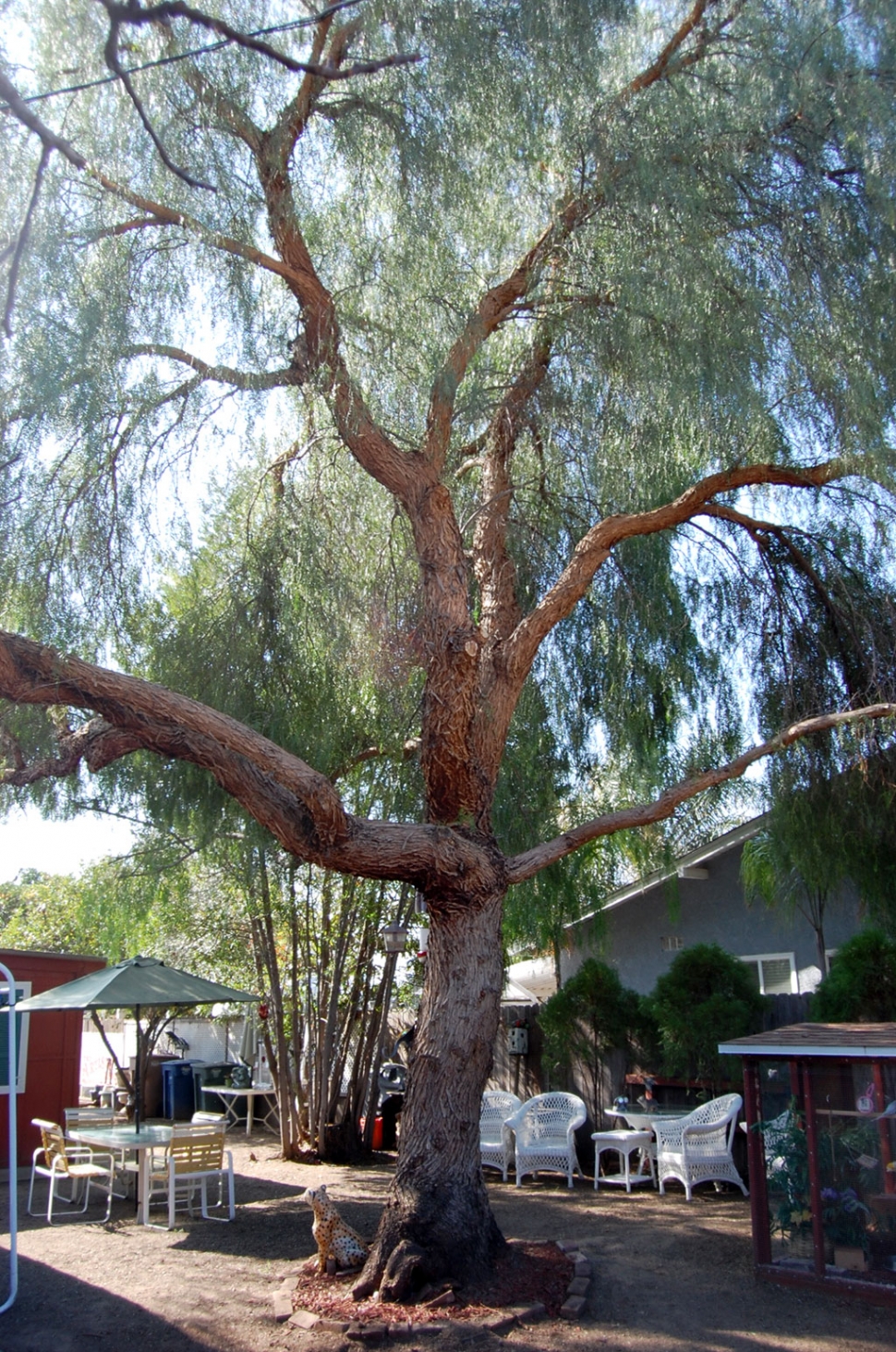 Fifteen years ago, the tree split in two and it was advised to remove it. The current owners carefully nurtured a sprout coming up from the remaining roots, and here it is today. 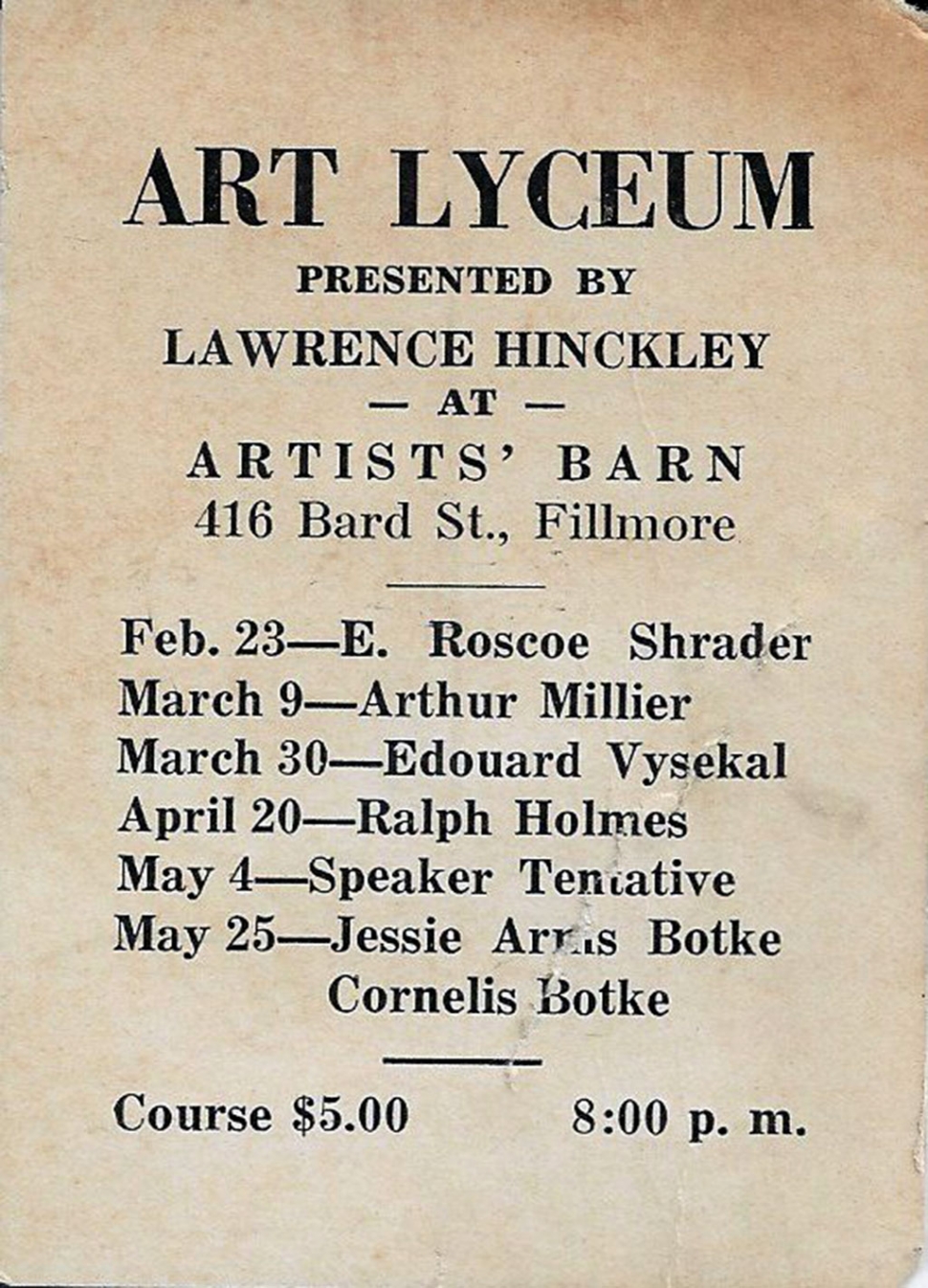 Art Lyceum 1937 Schedule which was a monthly event where speakers would come and speak about art. Courtesy Fillmore History Museum One day in 1936, while visiting her in-laws, Ira and Kate Hinckley, Mildred Coombs Hinckley noticed a derelict barn, 50 feet long and 20 feet wide, on the two acres the Hinckley's owned off First St. The idea struck her that the barn could be converted into a home and studio. Her enthusiasm for the idea carried the day and Labor Day saw a family barn raising. One thing they didn’t immediately get was a new roof. The night of the first rain found the couple marshalling anything which could hold water to catch the water from all the leaks in the old barn’s roof. By the fall, the newlyweds had a new home (with a new roof) and Fillmore had an art gallery, the Artists’ Barn. The gallery opened on November 21, 1936 and would be a landmark on Bard Street in Fillmore until 1961. Opening day saw exhibition of not only Hinckley’s work but Jesse and Cornelis Botke, Robert Clunie and Douglas Shively, all of Santa Paula. Also included from the beginning were wares of local craftsmen. The couple had expected a few dozen guests for the opening. Instead, they had over three hundred. Instituted the first year was the Art Lyceum, a monthly event with a speaker on something related to the art world. The cost? $5 per event. No one knew what sort of audience this would draw in the rural community, but like the opening event, it was soon had a waiting list for tickets. When it opened, the Artists’ Barn was the only art gallery in the county. It became a meeting place for the community and for the art world. The Hinckleys drew artists from throughout the United States to the small community. The community became more knowledgeable and interested in art as a result. Besides artists, the Barn drew tourist buses as it made a good place to break the long drive between Los Angeles and Santa Barbara. It was estimated that in the first five years it was open; it had an attendance of 20,000 people. Eventually, the Hinckleys had to enlarge the home to accommodate the art studio and gallery. One aspect of the home was the Artists’ Wall where visiting artists would leave signed works that became a permanent part of the home. Things slowed down during World War II and Lawrence went to work at Douglas Aircraft making charts for the Air Corps. The Hinckleys moved to Los Angeles, renting the Barn to Beatrice Albright, a schoolteacher. Agnes Ashby kept the gift shop running in their absence. After the war ended, they returned to the Barn and began a new phase, ceramics. They made figures and kitchen items such as spoon rests (the first of its kind), match holders and funnels. Lawrence insisted that anything they produced be of the best quality and quickly disposed of flawed items. The current owners tell of when gardening finding unbroken ceramics buried in the dirt – Lawrence’s rejects. Also, immensely popular were the classes that were held at the Artists’ Barn. Many residents remember taking classes there. Their ceramics line was phased out as imports began to flood the market. In 1961, the Hinckleys closed the Artists’ Barn, converting it back to a private home. Lawrence continued to paint and Mildred, now Dr. Mildred Hinckley, a Doctor of Theology, became the minister at the Church of Religious Science in Fillmore. In 1981 the Barn and the massive pepper tree in the garden were both declared Ventura County Historic Landmarks. Lawrence Hinckley passed away in 1987 and Mildred in 1995. |
